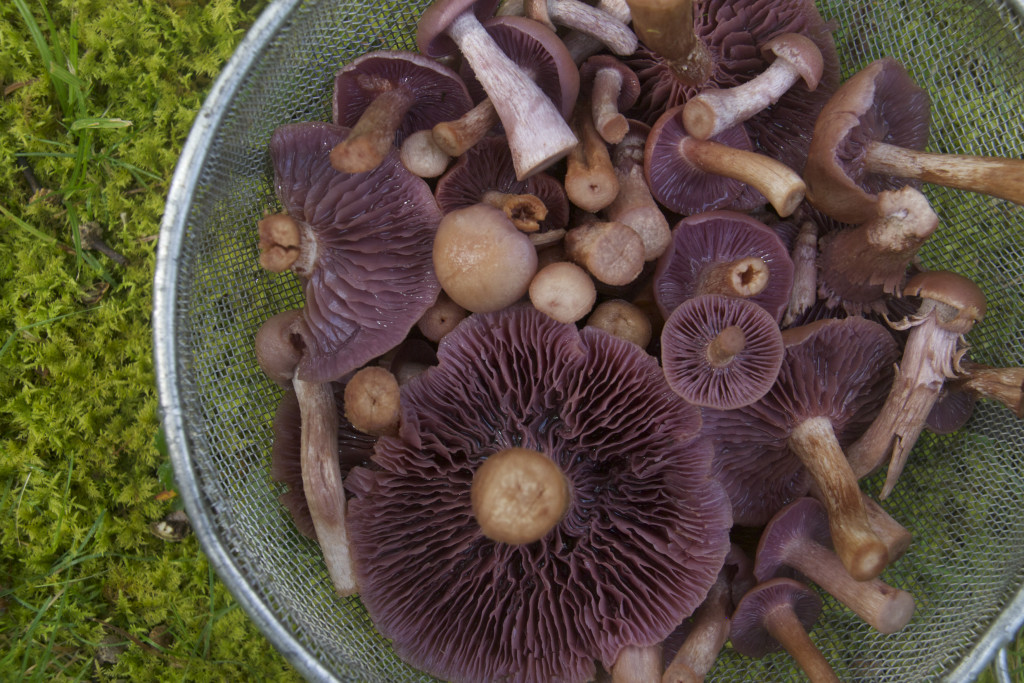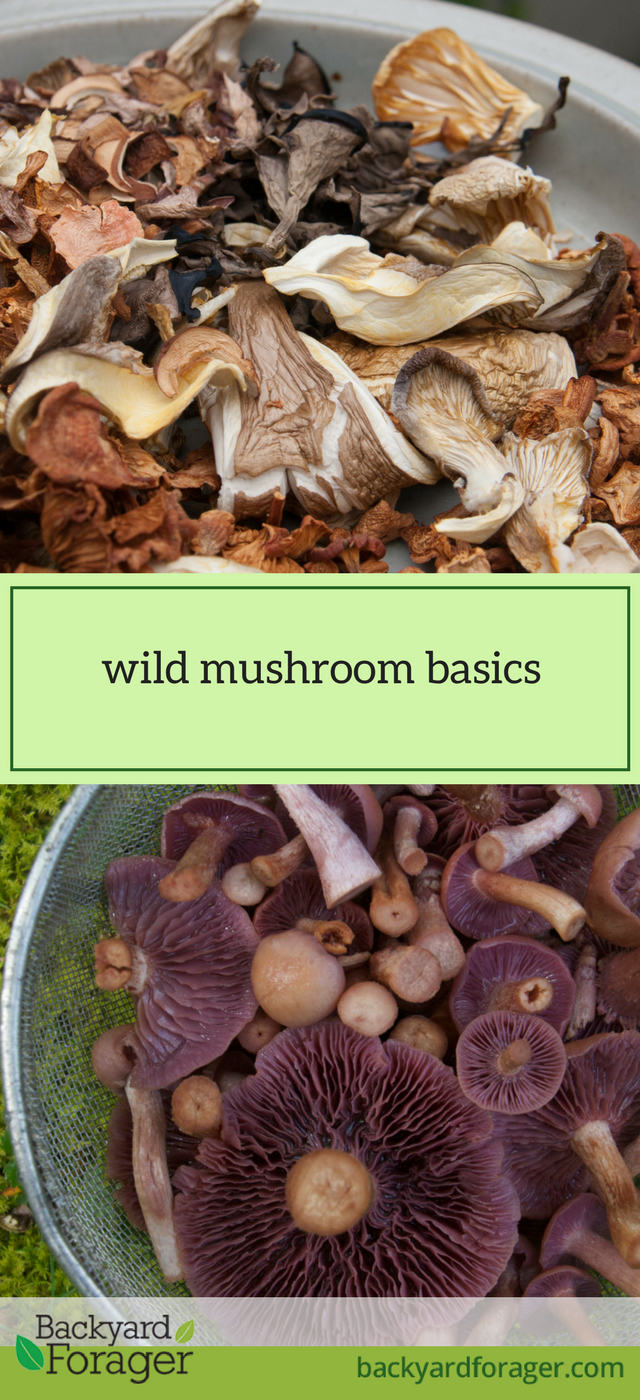
They don’t call it mushroom hunting for nothing. Fungi hold a special appeal for foragers: they’re unpredictable, exciting, and delicious…not to mention potentially dangerous. But oh the rewards are great! If you want to safely hunt for (and eat) wild mushrooms, here’s how to get started.
You’re going to need a few special tools, none of which are expensive, and all of which will make your life easier and your harvest cleaner and easier to process. Start slowly. If you can add 2-3 mushrooms to your repertoire every year…you’re in great shape!
1) Identify your mushrooms.
Never EVER eat a mushroom you’re not 100% certain of. That’s a good general rule for all wild edibles, but the stakes are especially high with mushrooms. Because, yes, mushrooms can kill you. I’ve passed up a few delicacies when I wasn’t absolutely sure my identification was correct. I was disappointed when I got home, checked my field guide, and realized what I’d left behind. But here I am, alive, and ready for my next mushroom hunt.
2) Start with non-gilled mushrooms.
No non-gilled mushrooms will kill you. They aren’t all delicious (although some, like porcini and morels, are superb), and some may cause gastrointenstinal distress, but none will do permanent damage. It’s important to know WHICH non-gilled mushrooms you’ve found, so this doesn’t mean you can skip the i.d. process. But if you’re extra nervous about wild mushrooms, non-gilled fungi are a good place to start.
3) Make a spore print.
Many mushrooms look similar on the outside, but their spores may tell a different story. Spores are held in the pore tubes of pored mushrooms and between the gills of gilled mushrooms. To make a spore print, detach a fresh cap from its stalk, then cut the cap in half. Place one piece on a light sheet of paper, and the other on a dark sheet. Cover each piece of cap with a drinking glass, and let it sit overnight. In the morning, lift the caps and check the paper for a dusting of spores. Dark spores will show up better on light paper, and light-colored spores will be easier to see on dark paper. Spore color is an essential identification factor for many mushrooms.
4) Wash your mushrooms.
We’ve all heard warnings about how washing mushrooms will turn them soggy or rob them of their flavor, but this simply isn’t true. Washing your mushrooms is a much easier and better way to clean them than dry brushing. You can even soak them briefly, to flush out spiders and insects. Mushrooms actually absorb very little water in the cleaning process, and what they do absorb will quickly be released by either dehydrating or cooking. If you don’t believe me, ask Harold McGee, Alton Brown, or Jacques Pepin.
5) Cook your mushrooms.
Yes, I’ve seen raw button mushrooms sliced into salads, but the people who serve those salads are not mushroom experts. The cell walls of mushrooms are made of chitin, not cellulose (like plants’ cell walls). Humans do not digest chitin well. We may not be able to digest it at all (scientists disagree). Cooking breaks down chitin, making mushrooms easier for us to digest. Cooking also makes the nutrients in mushrooms more accessible to the human body. Need more convincing? Some mushrooms can cause stomach upset when eaten raw, but are entirely harmless when properly cooked. And finally, cooking kills any insects or spiders that may have hitchhiked back to your kitchen on your mushroom harvest.
6) Join a local mushroom club.
You might be surprised by how many fellow mycophiles there are in your area. The North American Mycological Association lists local clubs on its website.
The thrill of the mushroom hunt is real. If you want in on the action, buy yourself a few good field guides, take some classes and go on every mushroom walk you can find. Make spore prints and join a local club. Knowledge is power and mushrooms are delicious.

Leave a Reply